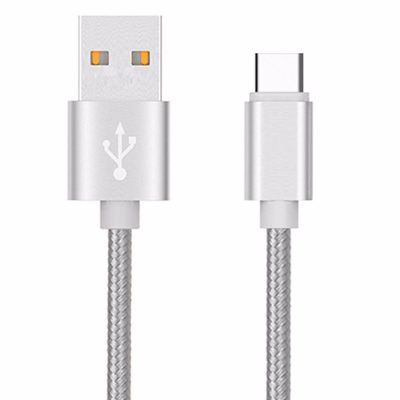USB C to A cables represent a significant step forward in data transfer technology, combining the best features of USB C and USB A standards. Here’s an exploration of why these cables are considered the future of data transfer:
1. Enhanced Data Transfer Speeds
- High-Speed Transfers: USB C to A cables, especially those supporting USB 3.0 and USB 3.1 standards, offer data transfer speeds of up to 5 Gbps and 10 Gbps respectively. This allows for quick transfer of large files such as HD videos, high-resolution images, and extensive databases.
- Efficient Workflows: Faster data transfer speeds mean reduced waiting times, enhancing productivity, particularly for professionals working in data-intensive fields like video editing, graphic design, and software development.
2. Wide Compatibility
- Cross-Generational Connectivity: USB C to A cables enable new USB C devices to connect to older USB A ports, ensuring seamless integration across different generations of devices. This backward compatibility is crucial for users who still rely on legacy hardware.
- Broad Device Support: These cables can connect a wide range of devices, including smartphones, tablets, laptops, external hard drives, and other peripherals, making them highly versatile and adaptable to various tech environments.
3. Improved Charging Capabilities
- Power Delivery (PD): Many USB C to A cables support higher power delivery, enabling fast charging for devices. USB PD technology can deliver up to 100W of power, making it possible to charge laptops, tablets, and other high-power devices quickly and efficiently.
- Universal Charging Solution: These cables can be used to charge multiple devices, reducing the need for separate chargers and simplifying your tech setup.
4. Reversible Connector Design
- User-Friendly: The USB C connector is reversible, which means it can be plugged in either way. This design eliminates the frustration of trying to connect the cable in the correct orientation, making everyday use more convenient and user-friendly.
5. Future-Proofing
- Adoption of USB C: As USB C becomes the standard for new devices, having USB C to A cables ensures compatibility with both current and future tech. This future-proofing reduces the need for new cables as you upgrade devices, offering long-term value.
- Evolving Technology: USB C to A cables are equipped to handle advancements in technology, including faster data transfer rates and increased power delivery capabilities, ensuring they remain relevant as standards evolve.
6. Robust Build Quality
- Durability: High-quality USB C to A cables are often constructed with durable materials like braided nylon and reinforced connectors, enhancing their longevity and resistance to wear and tear.
- Reliability: Better build quality ensures reliable performance over time, reducing the need for frequent replacements and providing consistent data transfer and charging capabilities.
7. Certified Safety Standards
- USB-IF Certification: Many USB C to A cables are certified by USB-IF, ensuring they meet industry standards for safety and performance. Certified cables reduce the risk of device damage due to substandard cables.
- Secure Charging: Properly certified cables help prevent issues like overheating, short-circuiting, and electrical faults, ensuring safe and reliable charging.
8. Economic and Environmental Benefits
- Cost-Effective: Investing in USB C to A cables is a cost-effective way to extend the usability of older peripherals with new devices, avoiding the need for multiple new accessories.
- Reduced Electronic Waste: By maintaining compatibility with older devices, these cables help reduce electronic waste, contributing to more sustainable tech practices.
Conclusion
USB C to A cables are poised to be the future of data transfer due to their high-speed capabilities, wide compatibility, enhanced charging, and robust build quality. They offer a user-friendly and future-proof solution that bridges the gap between older USB A technology and newer USB C devices. By supporting both current and future tech, these cables ensure seamless connectivity and efficient performance, making them an essential component of any modern tech setup.







